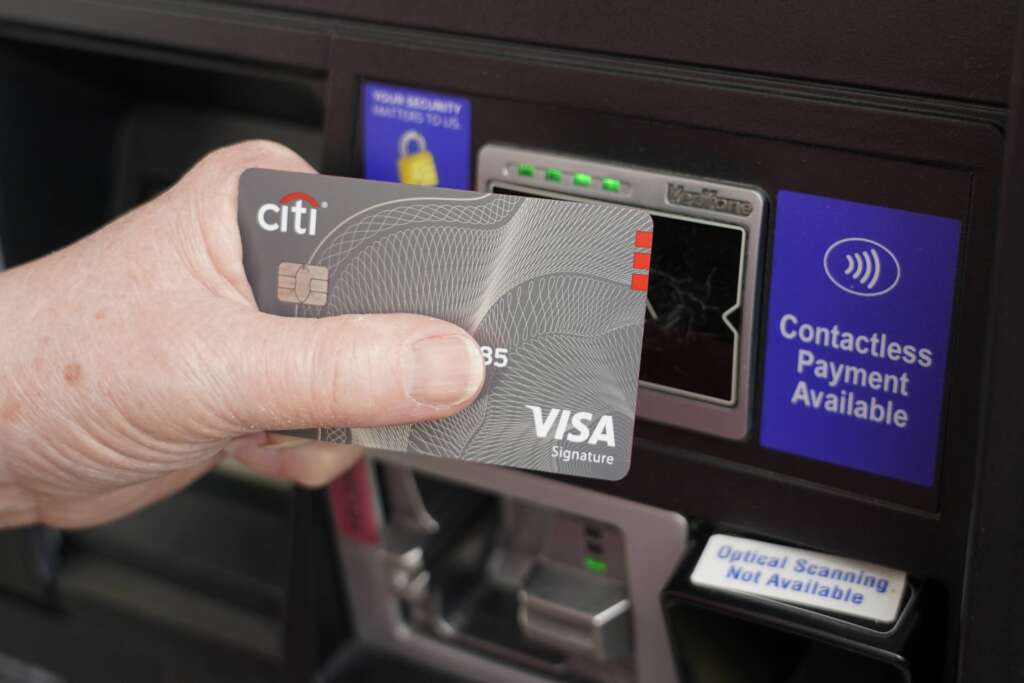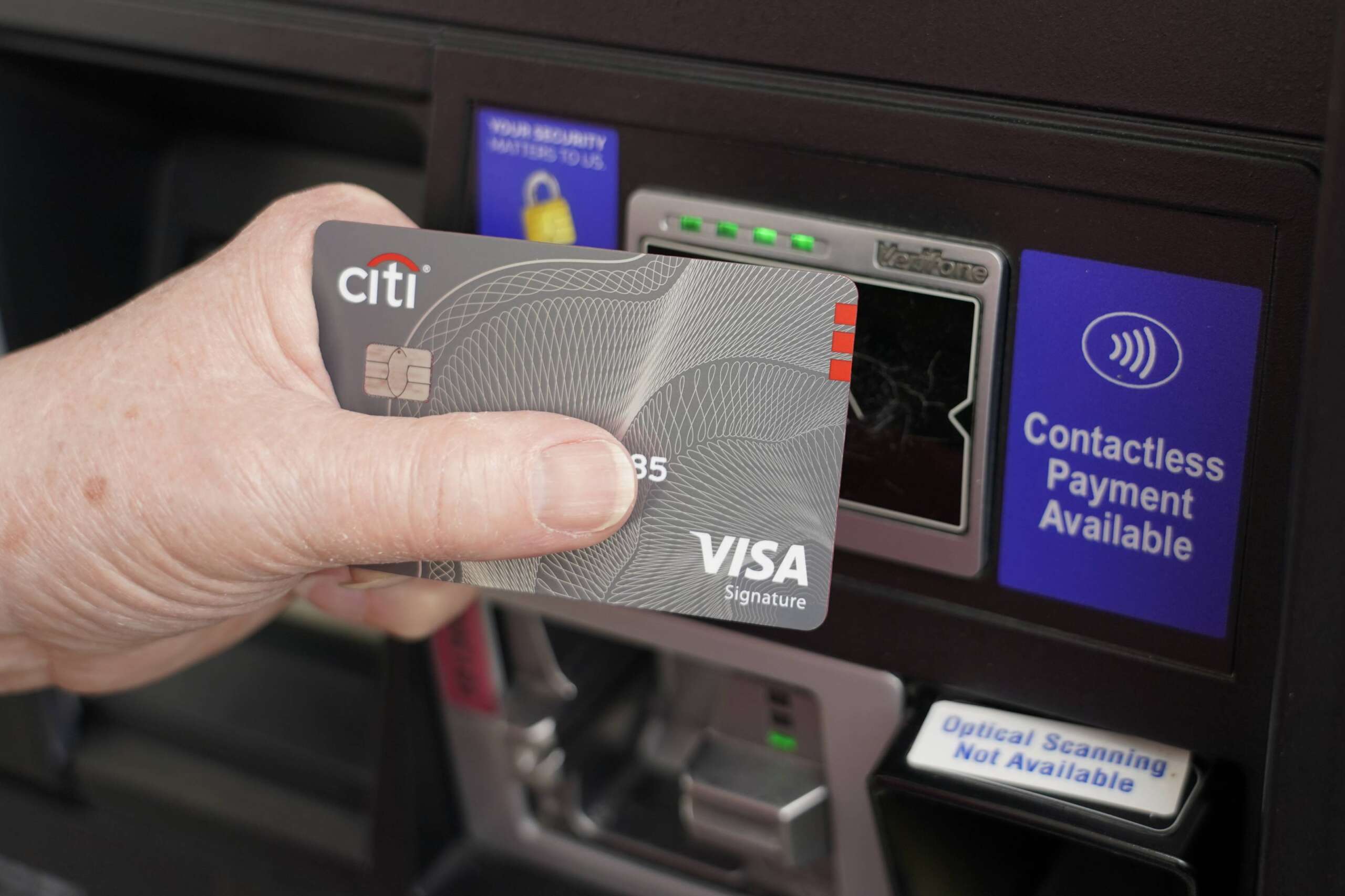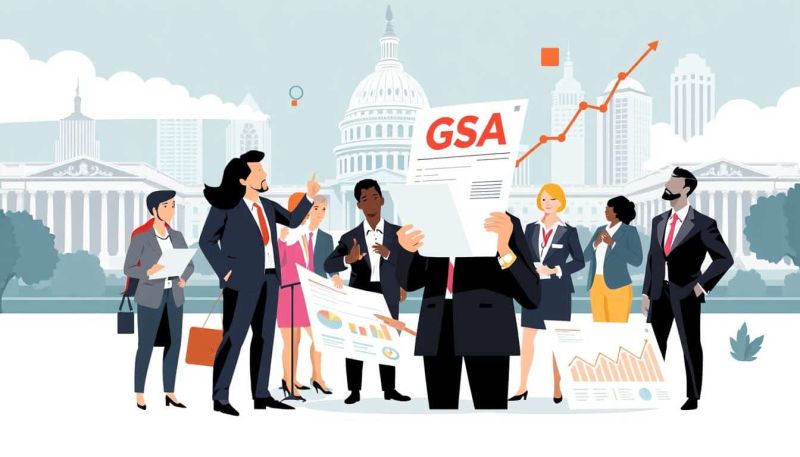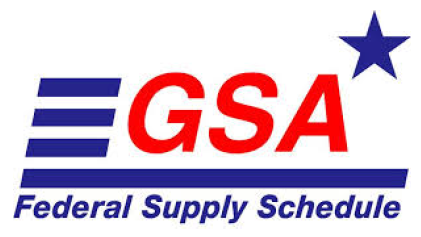
When the White House froze the government’s credit cards, it really gummed up the works. The long running purchase card program has saved untold millions of paperwork hours and saved the government billions of dollars. Here to inject some rational thinking about card usage, long-time federal procurement executive, and now a consultant, Shauna Weatherly.
Tom Temin And more than a CO, you oversaw a lot of the work that resulted in how credit cards are used by federal agencies, correct?
Shauna Weatherly Yeah, yeah, actually for about six years, I worked on the card program at the government level and actually wrote the current contracts that we see being used in government today for the purchase travel and fleet card system.
Tom Temin Right, and in one of your posts you noted how back as late as the early 90s there were still cages with safes in them for cash management and checking cash in and out of drawers with paper receipts.
Shauna Weatherly Yes, that’s absolutely true. I was one of those impressed fund cashiers who used to go in and grab cash every time somebody needed a trip to the hardware store or some sort of office supply that we didn’t have readily available in the logistics group. So yes, that, that was very much a thing.
Tom Temin And people looking at the credit card program from the outside often – and there are cases of abuse they come up from time to time – but maybe have the misconception that there is no oversight or no controls built into the use of cards, so people can go to casinos and fly first class or buy a new Escalade or something on a government credit card, but it’s a little bit more under control than that isn’t it?
Shauna Weatherly Oh, yes, absolutely. I mean, at the first level, there’s what we call merchant category code blocks, where the bank and the government decide what categories of businesses are blocked from being able to accept the card. That’s the first line of defense. And then we have an approving official defense that comes in with every transaction as a review of every statement that’s done every month. And then there’s, at every agency, an organization program coordinator that reviews all the transactions in an audit basis. And then the banks and even Visa and MasterCard have their own layers of fraud analytics and data management tools that are used that automatically flag questionable transactions.
Tom Temin So credit cards used by the government probably have a unique series of numbers assigned to them that other commercial entities would never have, or private card holders?
Shauna Weatherly Correct, they do, so that we can identify them as government cards, even if they’re not marked as such on the face of the card.
Tom Temin And from what you’ve been observing as a consultant to small businesses, but knowing the federal system, what have been the practical effects of this freeze or this $1 limit, this kind of thing, and is it still in place as far as we know?
Shauna Weatherly Yes, it’s still in place, and actually accounts are being closed on an almost daily basis for what is believed to be no use on those cards. What’s actually occurring is that small parks and lakes, small offices that are not in the Beltway, not near a contracting office, are struggling to get purchased what they need in terms of small things like maybe a toilet breaks at a construction field office and that’s the only one and they need somebody to come in fix it today. Or there’s a leak in a roof of a government contracting facility that’s maybe a field office and they need somebody to come in. Little things like that, small purchases just cannot get done. And it’s also impacting the little economies in those areas because those cards are used in the local economy.
Tom Temin And what’s the alternative, say, if you’re a remote National Park Service office in a cabin somewhere and you need a new chair and a couple of boxes of flares to sign people’s passports?
Shauna Weatherly Yeah. I mean, the alternative is really going back to whoever your cognizant contracting office is, putting in a purchase request and waiting, waiting for it to go through the process. And that’s not a cheap or short process. It can take a couple of weeks. And we’re talking about a cost to the government in terms of administrative cost anywhere from $500 to $1,200 to process each of those.
Tom Temin And I imagine from the contracting officer’s standpoint, that’s the last thing they want, is that kind of paperwork or online work, whatever it is, hours, cycles for little tiny purchases.
Shauna Weatherly Yeah, it just clogs up the system and these are low-risk purchases and it can dramatically impact the workload in an office where more critical high visibility or more public facing type of purchases need to be made quickly and more streamlined.
Tom Temin We’re speaking with Shawna Weatherly. She spent 25 years in federal procurement. Now she’s president of Federal Subcontract Solutions. And before all this DOGE stuff, the trend was, I guess, people thinking about this, was to expand the use of these cards to pay for contracts of increasingly larger size, dollar-wise, because of the benefits in rebates that the government gets.
Shauna Weatherly Yes, absolutely. That’s how these contracts are put into places. These banks actually propose refunds back to the government. So how much money is the government going to get back in terms of the use as the money flows through the cards? That’s one of the things that I think is getting lost in some of this is that piece of this, is this is a program that pays for itself through the use of and the gaining of refunds.
Tom Temin So how is that word getting to the DOGE people or is anybody that you know of in contact with them and saying, ‘hey, look, guys, you’re shooting yourselves in the foot here.’
Shauna Weatherly Yeah, I know that both the associations, MasterCard and Visa, I know the banks are talking to them, even internally, the SmartPay group that is the government-wide group at [the General Services Administration] are in close contact with them, but the influence they have may vary.
Tom Temin And what are your recommendations, again, having been a contracting officer and a contracting supervisor, what do you think should, aside from the DOGE business and restoring things to how they were a few weeks ago, what should the next round of development be in the purchase card program for the government?
Shauna Weatherly Well, I think the government has been using the plastic hard cards for a long time. I think that should evolve into more virtual cards and more use of electronic payment types that the banks can set that up from business to government to do, especially for recurring purchases, let’s say utilities, phones, things like that. Also, what I’ve been a proponent of is really pushing the use of the cards as more of a payment mechanism to make contract payments with. I know Emily Murphy has talked about paying up to $1 million. I’m a real big proponent of making sure that at least up to $250,000, the simplified acquisition range there is used for the cards because that helps small businesses. It helps them bring in cash flow. It helps them have cash reserves, helps them get better rates on their credit, and it helps get them to the next opportunity. And we do have some rules out there that require us to accelerate payments to small businesses. So that would be a big, helpful tool to do that.
Tom Temin And functionally, could you see, say, a phone storing a card, as people do in their regular lives? I just recharged my Metro card with the card of credit stored on the phone, so it’s internal to the device, the whole process. Could that happen coupled with mobile access to those common items that are used for small purchases or even to a particular contract that could be stored virtually on a mobile device, and the whole thing takes place in the user’s phone, with whatever security measures need to be in place and accountability measures?
Shauna Weatherly Yeah, absolutely. Especially on government issued mobile devices. I see there’s no reason for having that there with the controls that are in place right now.
Tom Temin All right, and any particular agencies ahead on this? They’re more forward-thinking than some of the others?
Shauna Weatherly Yeah, actually, Architect of the Capitol, Capitol Police, [the Department of Health and Human Services] has been moving forward, [the Department of Homeland Security] has done some really good things. So I think those four I see have been some of the four thinkers in this, and I have been working very hard myself and through some of the associations to bring those case studies forward so the rest of government understands that it’s doable and very easy and can streamline not only the purchase process, but even the reconciliation process on the back end where you’re verifying those purchases are accurate and for official use.
Tom Temin And you mentioned two agencies of the congressional branch. That’s kind of interesting also. That’s widely considered a backwater in terms of technology.
Shauna Weatherly Right.
Tom Temin All right so what else do people need to know about this besides urging DOGE to think about this a little bit more … well, my word is ‘rationally.’
Shauna Weatherly Well, I think that people don’t understand that it’s just not the purchase of the process that we get with the cards. We also get ordering off of existing contracts. The cards can be used to order, like off of GSA schedules or other existing contracts that agencies have. And again, like I mentioned before, it can be used as a payment tool. So we can make payments in the millions with these cards. They can be approved for single transaction limits that are very high to make payments. That also garners the government refunds. But along with that, we get a lot of things from the banks as part of these refunds that we get back. We get training and training materials that they do just for the government. We get 1099 processing, which is a nightmare for our finance offices, which takes that burden off of them. We get tax reclamation support. So if we do pay a federal tax somewhere, the banks do come in and help get that tax back to the government, which is a huge benefit. And most often we don’t pay tax even, when we’re making these purchases, because they’re tax exempt in most states, especially on the purchase card. And then we get the benefit of using all their commercial products and tools. So we get the benefit of their management system to manage the card transactions and view them. We get the benefit of these fraud analytics tools along with the associations. And we get all sorts of really cool things like telematics for our fleet car vehicles. And we get all sorts of integrated processes so they can integrate virtual payments and things like that. We get all of that at virtually no cost or a fee that would just come out of the refunds. We don’t ever pay it direct. It would always just be credited against any refunds the government would earn.
Tom Temin And you can charge your Tesla.
Shauna Weatherly Yeah, right.
Copyright
© 2025 Federal News Network. All rights reserved. This website is not intended for users located within the European Economic Area.




